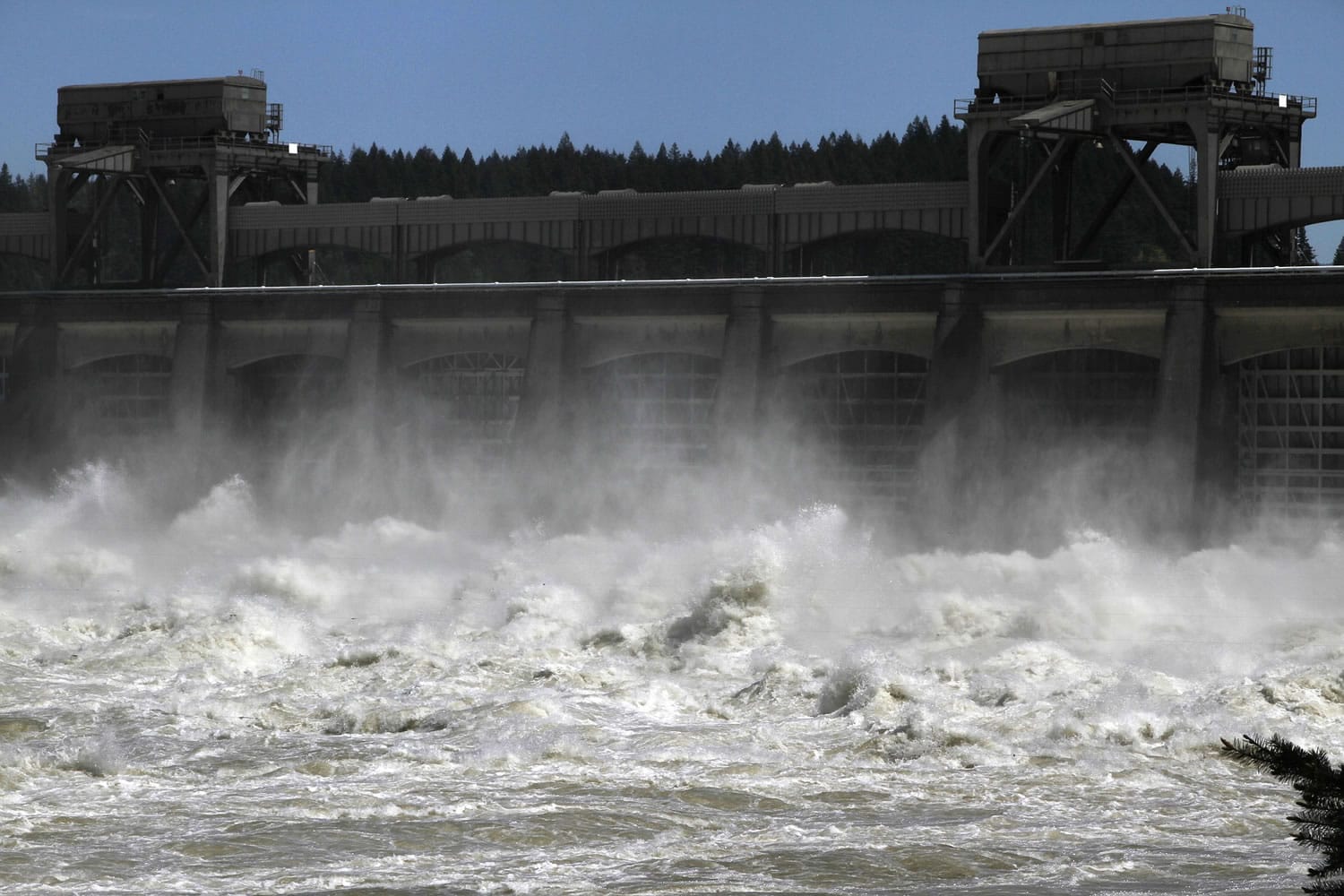GRANTS PASS, Ore. — The wind energy industry demanded Monday that the Bonneville Power Administration fix problems that have forced the shut-off of Northwest wind generators while hydroelectric dams fill the grid with power produced from a heavy spring runoff.
The complaints voiced by the American Wind Energy Association and U.S. Rep. Earl Blumenauer, D-Ore., at a wind energy conference in Anaheim, Calif., illustrate the problems green energy faces as it grows and tries to merge into a power system that is not ready to fully exploit it.
The conflict was generated by the highest spring runoff since 1997 in the Columbia Basin, where Bonneville markets power from 31 federally owned hydroelectric dams, providing about a third of the power for the Northwest.
“The reason we are in this situation is we connected wind to our system as fast as any utility in the country,” Bonneville spokesman Michael Milstein said. “The reality is that when both these power sources are being fueled by nature, we can’t always control the volume we get out of it.”
Blumenauer complained that Bonneville hasn’t done enough yet with $2 billion in federal stimulus funding to expand transmission lines, and has not adopted solutions identified in a 2007 report for the Northwest Power and Conservation Council on ways to store wind energy at times it is not needed.
He estimated the shut-offs are costing wind power generators millions of dollars at a time when they need help attracting investment to keep growing.
“There’s a disconnect between Bonneville’s short-term actions and (the Obama) administration’s long-term stated goals” supporting wind energy, Blumenauer said.
Milstein responded that the Northwest reached the goal of 6,000 megawatts of wind power a dozen years faster than the report expected and is working on strategies such as giant battery systems and reverse-pumping reservoirs suggested by the report.
In addition, two major transmission line projects funded by federal stimulus loans are under construction to harness wind power, he said.
Rob Gramlich, senior vice president of public policy for the American Wind Energy Association, said Bonneville was allowing other power sources to keep producing, and had not sold as much power as it could to utilities outside the Northwest.
He said the industry would soon seek legal remedies in court and from the Federal Energy Regulatory Commission.
Milstein said wind is the last power source turned off by Bonneville, and the dams are already sending so much water through spillways that the sites are exceeding standards for toxic gases that harm salmon. He pointed to a real-time graph on the agency’s website showing gas and coal power plants were operating at virtually zero production since May 17, when wind energy was shut off, and that wind energy has only been shut off during nighttime hours of low demand.
Milstein added that Bonneville had offered power with free transmission to all the utilities in California it could reach with its lines.



